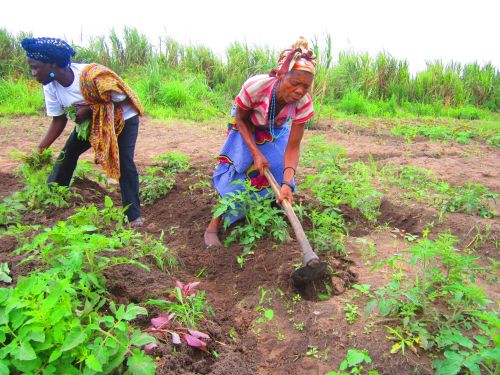 Tillage, denotes the process of cultivating soil for the purpose of agriculture. It consists of digging, ploughing harrowing, rolling, spading, hoeing, etc., all oi which operations tend to increase the goodness of the soil and thus to increase its fertility. For surface tillage, harrows, weeders and other agriculture. instruments of the fork and spade variety are used.
Tillage, denotes the process of cultivating soil for the purpose of agriculture. It consists of digging, ploughing harrowing, rolling, spading, hoeing, etc., all oi which operations tend to increase the goodness of the soil and thus to increase its fertility. For surface tillage, harrows, weeders and other agriculture. instruments of the fork and spade variety are used.
There Are 2 types of Tillage Primary Tillage And Secondary Tillage.
1. Primary Tillage
It consists of a soil removal in all its depth, with the purpose of improving the structure of the soil through the plow, for the development of the roots. These operations are done at a depth of 20 to 25 cm, depending mainly on the nature of the soil. The primary tillage facilitates and improves soil water retention capacity. This must be done at least one month before sowing, in order to allow the decomposition of the residues of the previous harvest.
The 6 Implements with which you can carry out Primary Tillage
- Chisel plow
- Subsoiler
- Disc plow
- Mouldboard plow
- Milling machine
- Rotovator
Secondary Tillage
The main objective of secondary tillage is to create the upper layer of the soil, that allows the seeds to germinate quickly and uniformly, as well as favoring a normal growth of the plant. The result of the secondary tillage operation depends, on the quality of the primary tillage.
After a poorly prepared plowing, it is difficult to perform a good job of secondary tillage. In addition, secondary tillage can not perform well if primary tillage was done wrong. Secondary tillage includes all operations after plowing, such as refining and leveling the soil for sowing, and after sowing, for weed control.
The 3 implements that you need to make the secondary Tillage
- Dredge
- Furrower
- Seeder
Pulverisation of the soil is essential for the root growth of plants. Breaking up the soil and stirring the subsoil below it facilitates the free development of roots and also the free passage of water and air which increases the health of the plants.
Deep ploughing is generally done in the autumn. as during the winter months the changes in temp. affect the soil, causing expansion or contraction according as the weather is wet or frosty. Pulverisation also favours the activity of beneficial organisms in the soil and promotes the solution of mineral matter. It also brings about the destruction of weeds and insects which are injurious to the development of cultivated plants.
Cultivators’ are the best instruments for destroying weeds. They are also called grubbers, and a special variety is called a scarifier. The cultivator consists of a triangular or rectangular iron frarne, with fixed teeth or tines.
Harrows and rollers are useful in separating the weeds from the soil. When the weeds have been removed the earth is well ploughed, and manure dug deep into the soil. Sub-tillage, or sub- soiling, forms a very important part of Tillage.
Below the surface clay, chalk and gravel are found, and it is the aim of the agriculturist slowly to cultivate his soil to a greater depth. Heavy clay soil needs constant turning over, and manure should be worked into it. Inter-tillage is carried on while the soil is still occupied by a crop. Trenching and draining also form an important part of Tillage.
We leave you this brief but very useful recommendation
Tilling or preparation of agricultural lands must be carried out. Since plowing or primary tillage represents the main operation of improving the structure of the soil , it is essential that this work be carried out in the best possible way.
